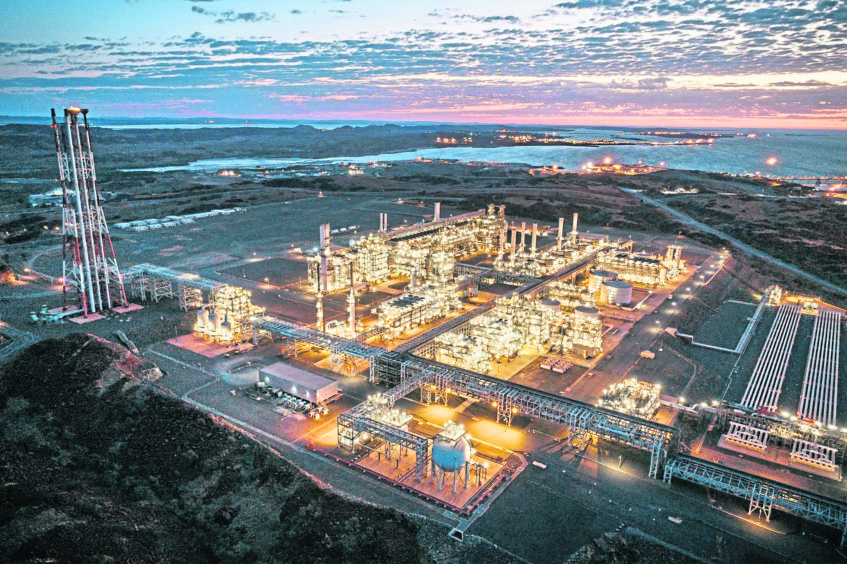
Demand destruction and sustained oil prices below $40 per barrel mean Asia Pacific is bracing itself for a brutal wave of cost cutting that will see its reliance on imports rise as upstream investment is hit hard.
A sustained period of low prices will delay most upstream final investment decisions (FIDs) in the region as companies prioritise short-term cashflow to survive a prolonged low oil price environment, warned Wood Mackenzie.
The biggest blow will be felt in Australia, where companies had aimed to approve large, strategically important LNG backfill investments in 2020. Significant projects in Southeast Asia will also be pushed back, said the energy research company.
“Looking across Asia Pacific, close to $35 billion of pre-FID and development spend is at risk in 2020-2022, and that’s before we consider potential cuts to existing spend on producing assets,” said Gavin Thompson, Asia Pacific vice-chairman at Wood Mackenzie.
Among those projects targeting FID in 2020, Woodside Energy’s Scarborough and Santos’ Barossa LNG schemes in Australia, which together account for $14bn of
potential investment, are likely to be deferred.
“With Santos estimated to require $60 per barrel to fund growth while maintaining current levels of debt and with 2020 revenues at Woodside set to fall by 40% if prices remain at current levels, neither of these companies is going to be keen to push the go button on these projects until there is more clarity on the direction of the oil price,” said Andrew Harwood, Asia Pacific research director at Woodmac.
Elsewhere in Southeast Asia, several pre-FID projects were already facing delays due to complexity and regulatory hurdles. Petronas’ two new upcoming deep-water development projects – the Limbayong field in Sabah off East Malaysia and the Kelidang Cluster in Brunei – are also expected to be put on hold.
Harwood said that only the most robust projects are likely to go ahead this year. These include Repsol’s Sakakemang development in Sumatra, Indonesia, and possibly
SapuraOMV’s Jerun scheme in Malaysia, which benefit from low break-even costs and proximity to existing infrastructure.
Nevertheless, given the lag between investment and production, the effect on output will be muted at first, but if all pre-FID projects are deferred indefinitely Asia Pacific could see a two million barrel per day (bpd) reduction in supply by 2025, Woodmac estimated.
This would be a reduction of more than 10% on pre-oil price crash forecasts, though the reality could be even higher depending on how much operators cut investment on existing projects, cautioned Harwood.
Spending will also be cut on existing upstream supply. Development drilling will be an obvious area to cut and makes up more than 50% of upstream investment on assets already in production.
However, many of the large producing fields in Asia Pacific are mature and need continued development drilling or extensive investment in enhanced oil recovery.
Heavy investment is needed to stem production declines at legacy fields, such as China’s Daqing, Indonesia’s Rokan, and even the offshore fields in the Gulf of Thailand, which supply much of Thailand’s gas demand. “Reducing production declines at these projects while reducing spending will be nothing short of herculean,” said Harwood.
The key market is China, as it produces 3.7m bpd of oil, equivalent to over 60% of the 6m bpd produced in the region. On a short-run marginal cost basis, Woodmac believes all this production is safe. But this is not the full picture, warned Thompson. With additional capital expenditure needed to maintain development drilling on a number of mature projects, some 700,000 bpd of Chinese crude is “out-of-the-money” at $35 per barrel.
But that does not mean those volumes will be shut-in, added Thompson. During the last downturn higher cost fields were eased down, and output fell to preserve capital. This time round, the situation is far more complex. “As China slowly gets back to work following the worst of the coronavirus, the Chinese national oil companies are under intense pressure to ramp up activity, supercharge spend and give the economy all the help they can,” said Thompson.
Exploration spend in Asia Pacific is also forecast to shrink this year, falling by up to $1bn from an expected level of $4.5bn. Wood Mackenzie had expected around 200 exploration wells in the region in 2020. But this could now fall by up to 30%.